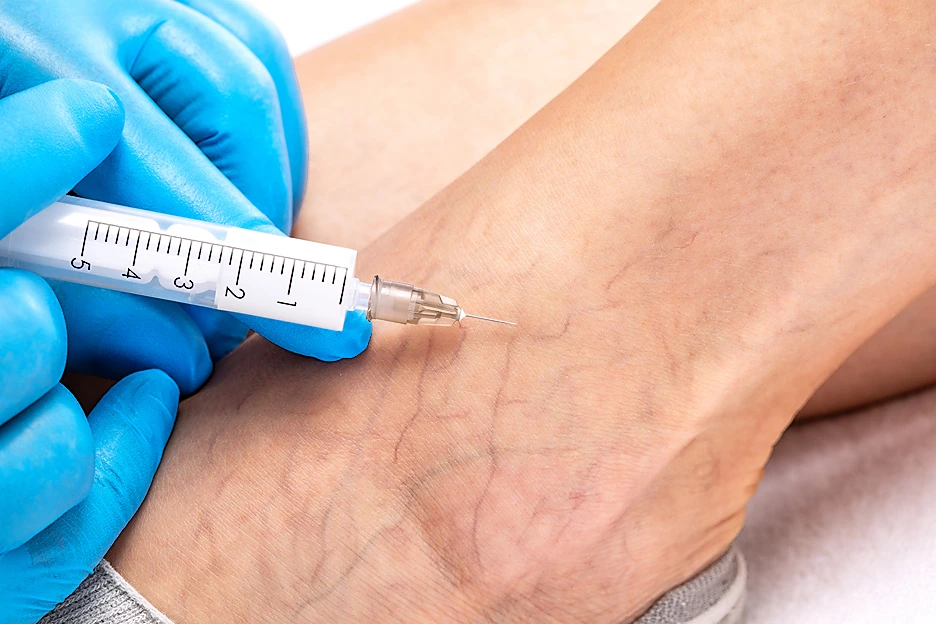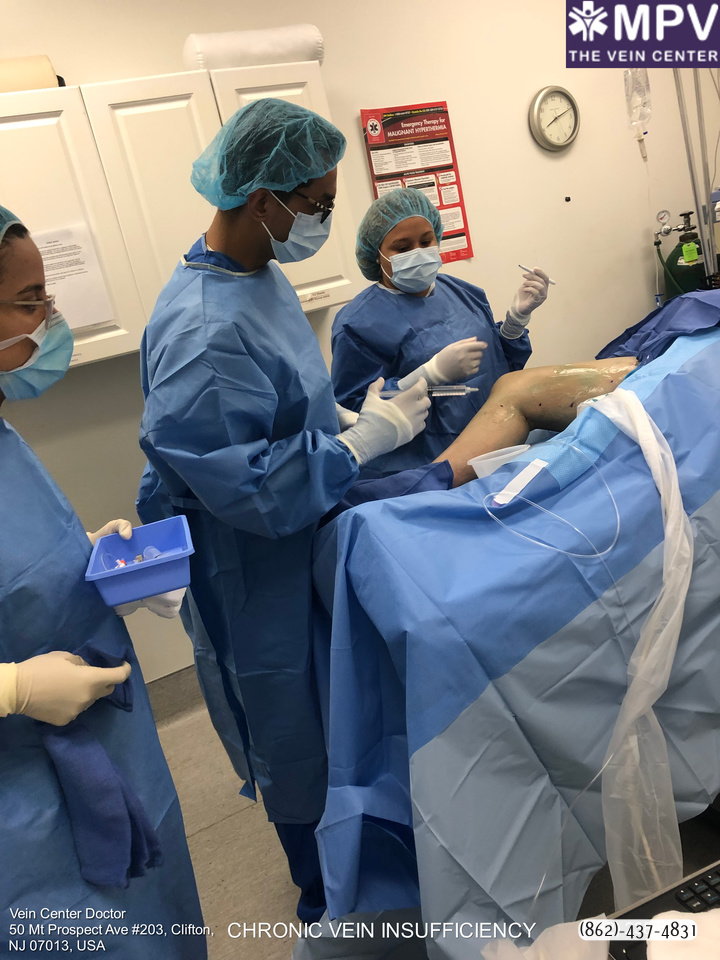Chronic venous insufficiency (CVI) is often treated with compression therapy and minimally-invasive procedures such as sclerotherapy, vein ablation, ligation, and vein stripping. However, recent studies show evidence of the significant potential of manual lymphatic drainage (MLD) in treating major CVI symptoms, including varicose veins.
So is manual lymphatic drainage an effective treatment for stage II chronic venous insufficiency? MLD aims to primarily treat lymphedema, a condition of tissue swelling due to lymph fluid accumulation through a skin-stretching massage promoting lymph flow. Lymphatics play an integral role in decongesting capillaries and tissues of excess interstitial fluid, thereby alleviating symptoms of chronic venous insufficiency such as varicose veins and chronic edema.
Living with unwanted veins is a thing of the past, when you can simply schedule a free consultation with Vein Center Doctor and find your ideal solution today.
Chronic venous insufficiency (also known as chronic venous disease) develops when valves fail to maintain the unidirectional flow of blood from the lower extremity to the heart, leading to complications such as venous reflux, vein dilation, varicose veins, and blood clotting.
CVI mostly occurs in the legs, but its symptoms can also manifest in other parts of the body. When left untreated, CVI can lead to blood pooling in your leg veins, causing venous dysfunctions.
The symptoms of chronic venous disease vary according to the type of vein afflicted. However, a patient should be on the lookout for its most common signs and symptoms, which are as follows:
CVI can be diagnosed by physical examination and medical history-taking, from which it can be determined whether you have a family history of risk factors such as cardiovascular diseases. Ultrasound can also be used as a non-invasive diagnostic procedure for chronic venous insufficiency.
The experienced signs and symptoms of chronic venous insufficiency also depend on the stage at which it’s being diagnosed and treated. According to the clinical classifications from the CEAP convention for the diagnosis of CVI, the stages of chronic venous insufficiency are:
| Stage | Severity | Symptoms |
| C0 | mild | No prominent signs of swelling; healthy venous system without blood backflow |
| C1 | mild | Appearance of spider veins/telangiectasia ( < 1 mm) and reticular veins (1 mm to 3 mm) |
| C2 | moderate | Appearance of varicose veins ( > 3 mm); the patient begins to experience swelling and aching of the legs |
| C3 | moderate to severe | Appearance of edema (swelling due to fluid retention in the legs) |
| C4 | severe | Appearance of eczema, skin discoloration, and redness; itchy sensation; flakiness and thickening of skin texture |
| C5 | severe | Open and self-healing ulceration of ankles; increased venous blood pressure due to chronic fluid retention |
| C6 | severe | Severe lower leg ulceration requiring serious wound care |
Valvular incompetence can be caused by genetic, environmental, and lifestyle factors that can modify blood pressure, blood flow, and vein tissue integrity. Below are some risk factors that can contribute to primary, secondary, and congenital chronic vein diseases:
Thanks to evolving technology, there are various conservative and minimally-invasive treatment procedures suited accordingly for each stage and classification of CVI.
In 2004, a systematic review by Peter Mortimer and Ian Pearson outlined the effects of chronic venous insufficiency on lymphatic function. This article included the physiology of the normal lymphatic system, the pathophysiology of edema and CVI, and the role of the lymphatic system in maintaining normal fluid homeostasis.
The lymphatic system consists of a network of lymphatic vessels transporting and regulating fluid all over the body, i.e., the lymph. The lymph is a fluid containing bacteria and immune cells such as lymphocytes and macrophages, which are essential for the body’s immune defense system.
The lymphatic vessel network runs in parallel with the cardiovascular system, with its capillaries transporting fluid through intradermal networks. For instance, in the legs, both superficial and deep lymphatic vessels run in association with the saphenous vein and the deep vein respectively, draining to cells in the leg and groin muscles. Like the veins, the large lymphatic vessels also have one-way valves to prevent fluid backflow.
Mortimer and Pearson’s systematic review also highlighted the indispensable role of lymphatic flow in tissue homeostasis. Lymph is produced in most tissues by a net force of blood capillary filtration. Thus, in cases of increased capillary filtration activity and capillary pressure (i.e., venous hypertension), the lymphatic capillary networks are consequently directly affected.
As mentioned, edema is a common symptom of chronic venous insufficiency. Edema refers to the swelling that occurs when lymph fluid accumulates within the leg’s tissues. Edema happens when the lymphatic flow rate is lower than the rate of production of interstitial fluid. This fluid consists of substances filtered by blood capillaries and is supposed to smoothly flow through the lymph vessels and be removed from the tissue.
Thus, edema (or more specifically, lymphoedema) occurs when the lymph drainage is slower than the capillary filtration rate. Capillary filtration, meanwhile, is directly influenced by venous hypertension and high blood pressure which are effects of valvular incompetence and blood aggregation in chronic venous insufficiency.
Accordingly, there is a rich trove of evidence of the concomitant lymphatic pathology associated with blood vessel complications due to CVI. Similarly, congenital abnormality in lymphatic function can also exacerbate edematous symptoms in CVI.
Manual lymphatic drainage (MLD) or lymphatic drainage massage is a procedure developed by Dr. Emil Vodder and Estrid Vodder in 1936 to treat swollen lymph nodes. Principally, manual lymph drainage is used to treat lymphedema or the retention of lymph fluid within the tissue.
Lymphedema is also a common side effect after a mastectomy, or breast cancer surgery. Some of its symptoms include:
Lymphedema, like CVI, also has etiological classifications. Primary lymphedema is idiopathic and congenital and results from a spontaneous abnormality in lymphatic development. Whereas, secondary lymphedema is precipitated by a prior injury or associated with lifestyle and environmental factors such as obesity and infections.
MLD is a skin-stretching massage that aims to promote the movement of lymph fluid through the lymph vessels. It has two phases:
Lymphatic drainage massage uses 4 main strokes (rotary technique, scoop technique, pump technique, and stationary circles) to stimulate the lymph nodes and promote movement of the lymphatic fluid in the lymph vessels.
Manual lymph drainage therapy is first administered by the lymphedema specialist to unaffected areas to “decongest” and move the fluid away from the affected limb region. Diaphragmatic breathing is advised at the beginning and end of the session to aid in opening deep lymphatic vessels and increasing lymph fluid movement toward the heart.
Lymphatic drainage therapy is usually done by a highly-skilled lymphedema specialist. MLD comes in a variety of techniques, but in brief, these are the common steps:
Usually, MLD is administered as part of the package of Complete Decongestive Therapy (CDT). This program is a holistic lymphedema treatment that combines MLD with treatments such as compressive therapy, exercises, and skin care.
There are four techniques used for manual lymph drainage, which are the Vodder, Foldi, Casley-Smith, and Leduc techniques.
Manual lymph drainage therapy can treat a multitude of health problems aside from lymphedema and other lymphatic system ailments. These include the following:

According to a 2013 study, manual lymph drainage therapy has proven effective in increasing venous blood flow in the lower extremity regardless of the presence of CVI. This makes MLD a feasible strategy in the prevention of venous stasis complications in CVI. Consequently, as an effective preventative treatment, it can be as effective in preventing stage II chronic venous insufficiency which manifests itself in varicose veins.
Additionally, a study in 2018 also attested to MLD’s success in improving patient conditions from symptoms regarding ulcer healing and edema alleviation. MLD has also proven effective in reducing limb volume in patients with chronic venous disease, increasing their quality of life. This means that manual lymph drainage therapy can also be used to treat more severe cases of chronic venous insufficiency.
The lymphatic system and the cardiovascular system are parallel networks of fluid exchange. Capillary-level exchanges highlight the interdependence of these two systems, and consequently, this is where the symptoms of resultant cardiovascular and lymphatic disorders originate. Thus, it’s safe to say that a healthy lymphatic system treated by lymphatic drainage therapy can contribute to the prevention of stage II CVI.

Chronic venous disease, if not treated well, can lead to complications that may disturb your quality of life. Non-invasive procedures such as compression therapy and manual lymph drainage must be executed by professional hands with patient-centered attitudes and in-depth expertise.
Here at Vein Center Doctor, our team is always dedicated to providing our patients the vein treatments they deserve. Book a consultation with us now by contacting us at 862-227-1143 (NJ) or 862-227-1054 (NY) for your free consultation.
Find exactly what you need to get rid of your vein-related problems. Dr. Sood and the rest of our team at Vein Center Doctor are ready to help: schedule your free consultation today.
Most Insurance is accepted for treatment